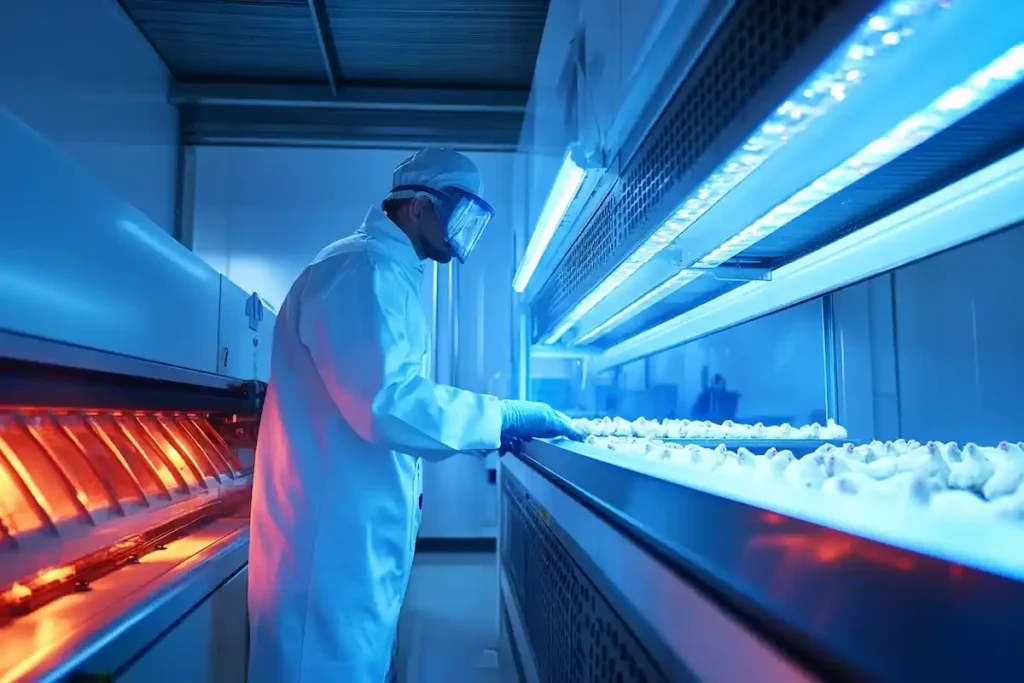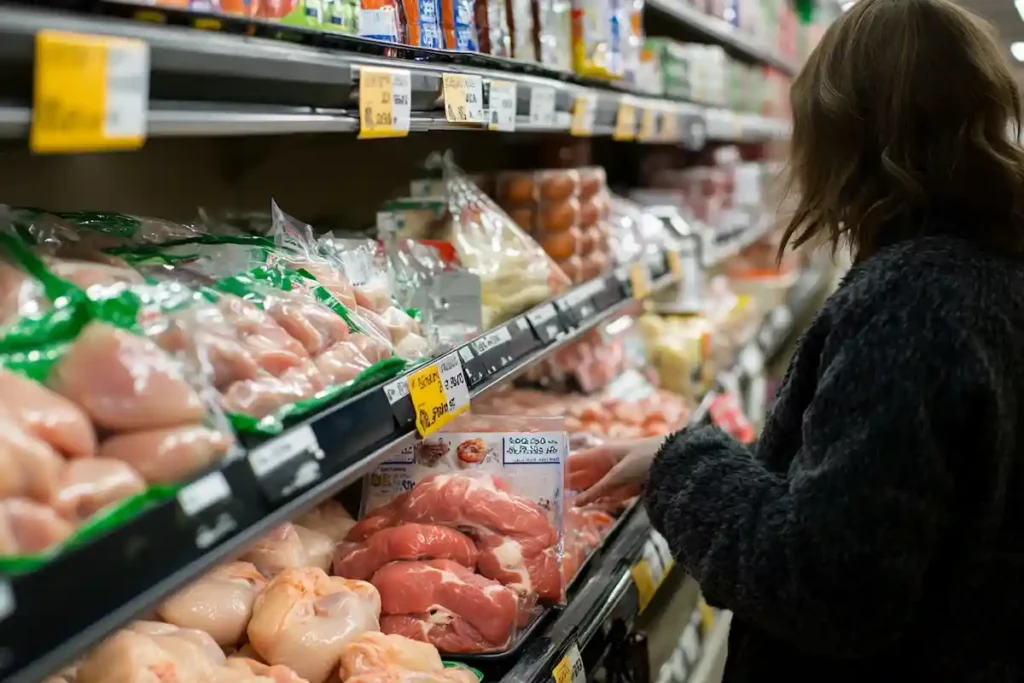Chicken Breast: An Inexpensive Protein Choice
Chicken breast is one of the most popular choices for lean protein around the world. But have you ever wondered why is chicken breast so cheap compared to other meats? There’s more behind that affordable price tag than just a regular trip to the grocery store. In this article, we’ll take a deep dive into the economic factors, farming techniques, government policies, and even ethical concerns that make chicken breast such a budget-friendly protein. By exploring the industry from all angles, you’ll get a clearer picture of why is chicken breast so cheap and why chicken is often the go-to choice for families across the globe.
1. Introduction and Background
What Makes Chicken Breast a Popular Choice?
Chicken breast is often dubbed the ultimate lean protein. It’s a versatile meat option for just about any dish you can think of—whether you’re grilling, frying, or tossing it in a salad. But there’s more to its appeal than just versatility. It’s affordable, widely available, and easy to cook, making it a crowd favorite for those seeking a healthy diet without the hefty price tag. Because it’s packed with nutrients and can be adapted to almost any recipe, chicken breast remains a staple in kitchens across the world. Still, many people continue to ask why is chicken breast so cheap despite all these advantages.
The Economic Factors Driving Chicken Production Costs
Several factors make chicken breast affordable. Economies of scale play a big role. Large poultry farms produce chicken at high volumes, reducing production costs per bird. Technological advancements in poultry farming have streamlined feed management and processing, lowering overall costs. High demand for chicken, combined with efficient supply chains, helps keep prices low.
Additionally, government subsidies often help keep farming costs lower for poultry producers. Government financial support keeps chicken accessible and cost-effective for consumers. The price reflects production efficiency and subsidies that help drive costs down, which is another part of explaining why is chicken breast so cheap in many markets.
Chicken breast’s popularity extends beyond versatility. With lean protein in high demand, it remains a top choice for many. And these economic dynamics are key to keeping that choice as budget-friendly as possible.
2. Factors Contributing to Cheap Chicken Breast Prices
Advancements in Poultry Farming Technology

One of the biggest contributors to why is chicken breast so cheap is the use of advanced poultry farming technology. The poultry industry has embraced automated chicken farming, reducing labor costs and improving efficiency. Automated feeding, climate control, and health monitoring have streamlined the farming process. Technological efficiency allows farmers to produce more chickens with less effort, lowering costs for consumers.
Economies of Scale in Chicken Production
How Large Farms Influence Prices
Another major factor driving down the price of chicken breast is the existence of economies of scale. Large poultry farms spread fixed costs over many birds. This industrial farming approach ensures a lower cost per chicken than smaller farms. Mass production keeps prices lower, making chicken breast one of the most affordable proteins. Large-scale operations also benefit from better purchasing power, further reducing costs.
High Supply Meets High Demand
Chicken Consumption Trends
The demand for chicken has been growing steadily, and the industry has adjusted accordingly. Consumer preference for an affordable and healthy protein helps clarify why is chicken breast so cheap and widely accessible. The poultry industry grows to meet demand, ensuring a constant supply that stabilizes and reduces prices. High supply meeting high demand keeps chicken breast competitively priced.
Subsidies and Government Policies
Financial Support for Poultry Farmers
Government policies and farming subsidies also play a crucial role in keeping chicken prices low. Governments provide financial support to poultry farmers, offsetting production costs. Support includes direct payments, feed subsidies, and other incentives. By covering expenses, these government regulations keep chicken breast affordable for both producers and consumers. This government backing is another significant aspect of why is chicken breast so cheap in many regions.
3. Chicken Farming Practices and Their Impact on Cost
Selective Breeding for Faster Growth
One of the key ways that chicken breast is kept affordable is through selective breeding. Poultry farmers have used genetic improvements to produce birds that grow faster and yield more breast meat. These broiler chickens reach market weight in weeks, significantly shortening the growth cycle. This broiler chicken approach reduces costs, allowing farmers to produce more chickens in less time, thus contributing to why is chicken breast so cheap in stores.
Genetic Improvements in Chickens
Genetic modification and selective breeding help enhance growth rates while keeping chickens healthy. This focus on rapid growth means chickens are ready sooner, reducing production costs. Reducing the time needed to raise chickens allows farmers to pass these savings on to consumers, which is central to why is chicken breast so cheap on grocery shelves.
Cost-Effective Feed Management
Optimized Feed Formulas for Poultry
Another major factor contributing to the low price of chicken breast is the development of cost-effective feed management practices. Farmers have optimized feed formulas to ensure chickens grow quickly without wasting resources. These costs are minimized by using a blend of grains, protein, and supplements. Nutrition efficiency lowers the overall cost of raising chickens, making chicken breast more affordable.
Optimized feed helps chickens grow at an ideal rate, requiring less feed in a shorter time. This efficiency benefits farmers and keeps chicken cheap, aligning with consumer curiosity about why is chicken breast so cheap relative to many other proteins.
Short Growth Cycle of Broiler Chickens
How Lifecycle Impacts Costs
The short growth cycle of broiler chickens is another crucial factor that makes chicken breast so inexpensive. These chickens grow quickly, reaching full size in six to seven weeks. This rapid growth allows farmers to raise multiple batches yearly, maximizing production. Raising and harvesting chickens quickly maintains a steady supply, keeping prices low and showing why is chicken breast so cheap even when demand is high.
Creating harvest-ready poultry in a short time meets market demand and reduces overhead costs like housing and feeding. Shortening the chicken lifecycle is central to why is chicken breast so cheap and remains an economical protein option worldwide.
4. Global Perspectives on Chicken Pricing
Comparing Chicken Breast Prices Worldwide
Regional Pricing Variations
When it comes to chicken breast prices worldwide, there are notable regional pricing variations due to factors like local demand, production costs, and government policies. Countries with efficient poultry production, like the United States and Brazil, have more affordable chicken compared to less industrialized regions. The global poultry market is influenced by feed availability, labor costs, and trade dynamics, contributing to price disparity worldwide.
Regions with large-scale poultry production facilities tend to have lower chicken prices, while areas with more traditional farming practices might see higher costs. These differences help illustrate why is chicken breast so cheap in certain areas but more expensive elsewhere.
Export and Import Dynamics
How Trade Policies Influence Costs
The export and import dynamics of chicken also play a major role in determining why is chicken breast so cheap in some parts of the world. Major chicken exporters, like Brazil and the U.S., benefit from lower domestic prices due to economies of scale and surplus exports. Import tariffs and trade restrictions can increase prices by limiting cheaper imported poultry.
Trade policies—such as tariffs, quotas, and other regulations—can heavily influence the cost of chicken breast in a given region. Countries that impose high tariffs on imported poultry often see higher prices for chicken compared to nations with more open trade policies. The interplay between exports, imports, and local regulations is crucial to understanding global pricing and why is chicken breast so cheap in certain markets.
5. Ethical and Environmental Concerns Related to Cheap Chicken
Animal Welfare Practices in Poultry Farming
Is Cheaper Meat Sacrificing Welfare?
One of the key ethical concerns with why is chicken breast so cheap is whether animal welfare is being compromised in favor of lower prices. Many industrial-scale farms focus primarily on cost-cutting measures, which can sometimes lead to suboptimal living conditions for the chickens. Issues like overcrowding, lack of outdoor access, and limited space to move can significantly impact the well-being of these animals. Critics argue that humane farming practices are often sacrificed to maintain the low prices consumers expect.
Ensuring higher welfare standards for chickens often requires more space, better living conditions, and more humane handling practices, all of which can increase the cost of production. This, in turn, would likely raise chicken breast prices, directly affecting why is chicken breast so cheap under the current system.
Environmental Implications of Large-Scale Chicken Farming
The True Cost to the Planet
The environmental impact of large-scale poultry farming is another significant concern when considering why is chicken breast so cheap. Industrial chicken farming contributes to a substantial carbon footprint due to the large amounts of feed required, energy usage in chicken houses, and waste management. Moreover, the production of poultry feed itself often involves intensive farming practices that can lead to soil depletion, deforestation, and water pollution.
While chicken farming is more environmentally efficient compared to beef or pork production, there are still considerable sustainability issues to address. As the industry continues to grow, understanding the environmental effects is critical for evaluating the real price behind why is chicken breast so cheap in many parts of the world.
Consumer Awareness and Shifting Preferences

Ethical Eating Trends
As consumers become more aware of the ethical and environmental issues tied to poultry farming, there has been a noticeable shift towards more ethical eating trends. Many people are now opting for organic chicken or free-range options, which, although more expensive, are seen as more humane and environmentally friendly alternatives. These chickens are raised under better conditions, with access to outdoor spaces and a diet free from antibiotics and growth hormones.
The growing demand for ethically sourced meat reflects a response to the question of why is chicken breast so cheap and whether those low prices are truly sustainable. Although specialty poultry products come at a higher cost, they offer reassurance regarding animal welfare and environmental impact. This shift in consumer awareness highlights the evolving balance between cost, ethics, and quality in the poultry industry.
6. FAQs Section: Why Is Chicken Breast So Cheap?
Why is chicken breast cheaper than other meats?
Chicken breast is generally cheaper than other meats due to a combination of production efficiency, economies of scale, and technological advancements in poultry farming. The short growth cycle of chickens and cost-effective feed management also play significant roles in reducing production costs, clarifying why is chicken breast so cheap compared to beef or pork.
Does cheap chicken compromise quality?
While cheap chicken breast can be of good quality, there are concerns that lower prices may come at the cost of meat quality and food safety. Intensive farming practices aimed at cutting costs can lead to overcrowding and other welfare issues, which may affect the overall quality of the meat. However, regulatory standards are in place to ensure that chicken sold in stores is safe for consumption.
Conclusion
The affordability of chicken breast is the result of a complex interplay of factors that include technological advancements, economies of scale, government subsidies, and innovative farming practices. The poultry industry has worked tirelessly to reduce costs at every stage of production—from breeding and feed management to streamlined logistics—allowing chicken breast to remain a budget-friendly protein source for millions of people worldwide. High supply and consumer demand further explain why is chicken breast so cheap in many markets.
However, this low cost comes with its own set of ethical and environmental challenges. Industrial poultry farming raises concerns about animal welfare, sustainability, and environmental impact. Consumers are increasingly aware that why is chicken breast so cheap can’t be answered solely by economics; it also involves how these animals are raised and the ecological footprint of large-scale farming.
This awareness has led to a shift in consumer preferences, with a growing number of people opting for ethically sourced alternatives like organic and free-range chicken. While these products may be more expensive, they offer a sense of assurance regarding animal welfare and sustainability, reflecting a balance between cost and ethical considerations.

